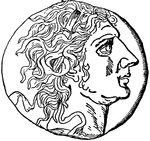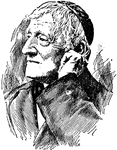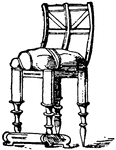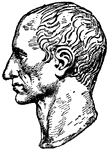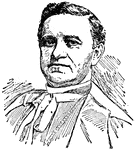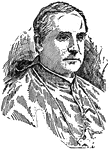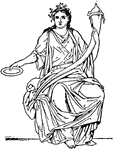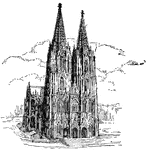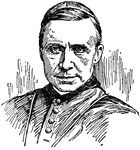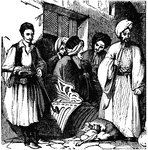
Life in Constantinople
In the streets of Constantinople one might find lemonade sands, sweetmeats, coffee, and pipes and at…
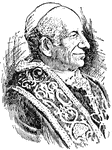
Leo XIII
Pope Leo XIII (1810-1903). Archbishop, bishop, cardinal, chamberlain of the Sacred College, and Pope.
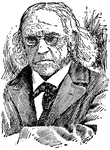
Theodor Mommsen
(1817-1903) German historian and archaeologist most celebrated for his work with Roman history.

Roman Sarcophagus Tomb
A coffin or tomb of stone; a kind of stone chest, generally more or less ornamented for receiving a…

Medulla
Dorsal or posterior view of the medulla, fourth ventricle, and mesencephalon. Labels: p.n., line of…

Fourth Ventricle with the Medulla Oblongata and the Corpora Quadrigemina
Fourth ventricle with the medulla oblongata and the corpora quadrigemina. The roman numbers indicate…
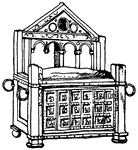
Chair of St. Peter Arm-Chair
The chair of St. Peter was made out of wood with ivory reliefs illustrating the story of Hercules in…

Roman Arm-Chair
The Roman Arm-chair had a decoration symbolic of Ceres, the Roman goddess of growing plants.

Roman Bedstead
This Roman bedstead had a Pompeian vase-painting. It included a head and foot board. It was made out…
Barocco Clock-Case
The Barocco clock-case of the 17th century had a case for protecting the interior work against dust…

Modern Clock-Case
This Modern clock-case was made with metal ornaments. It was Dome-shaped and crowned by a small bell-turret.

Modern Clock-Case
This Modern clock-case had a hanging-case intended for both weight and pendulum clocks.

Toilet-Stand Clock-Case
This Toilet-stand clock-case was made during the German Renaissance in 1597. A slender tall cabinet,…

Toilet-Stand Clock-Case
This Toilet-stand clock-case was made during the German Renaissance. Made of various colored wood, it…

Pinna Rudis (Linnaeus)
"The genus Pinna was so called from its resemblance to the plumelet which the Roman soldiers…

Pinna Nigrina (Lamarck)
"The genus Pinna was so called from its resemblance to the plumelet which the Roman soldiers…

Pinna Nobilis, with its byssus (Linnaeus)
"The genus Pinna was so called from its resemblance to the plumelet which the Roman soldiers…

Pinna Bullata (Swainson)
"The genus Pinna was so called from its resemblance to the plumelet which the Roman soldiers…

Construction of a Portion of Appian Way
A famous road with many branches which connected Rome with Southern Italy

Fates
The three fates of Greek Mythology were three sisters who spun the thread of life named Clotho, Lachesis,…
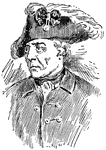
Frederick II
(1712-1786) King of Prussia from the Hohenzollern dynaasty, known as the founder of Germany's military…

Position for Lettering
Lettering is the process of forming letters, numerals, and other characters in technical drawings.
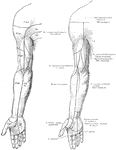
Cutaneous Nerves of the Front of the Arm
Distribution of cutaneous nerves on the front of the right superior extremity. The figure at the right…

Cutaneous Nerves on the Back of the Legs
Distribution of cutaneous nerves on the back of the right lower extremity. The figure at the right shows…
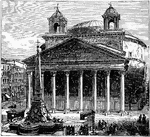
The Pantheon at Rome
The Pantheon is a building in Rome which was originally built as a temple to all the gods of Ancient…
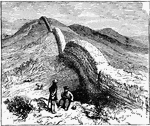
Hadrian's Wall
Hadrian's Wall is a stone and turf fortification built by the Roman Empire across the width of what…
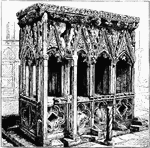
St. Alban's Shrine
Saint Alban was the first British Christian martyr. Along with his fellow saints Julius and Aaron, Alban…

The City of Constantinople (Byzantium)
Byzantine Constantinople had been the capital of a Christian empire, see Christendom, successor to ancient…
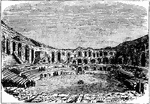
Roman Amphitheatre at Arles
The Arles Amphitheatre is a Roman amphitheatre in the southern French town of Arles.

Roman Soldiers
The distinction between rank and unit type doesn't seem to have been as precise as in a modern-day army,…
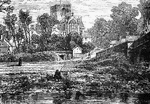
St. Asaph Cathedral
St Asaph Cathedral, (Welsh: Eglwys Gadeiriol Llanelwy) at St Asaph, Denbighshire, north Wales, is sometimes…

Roman Lighthouse, and Part of St. Mary's Church, Dover
The lighthouse on the Eastern Heights still stands in the grounds of Dover Castle to 80 foot (24 m)…

St. Paul's Cathedral
St Paul's Cathedral, is the Anglican cathedral on Ludgate Hill, in the City of London, and the seat…

The Door of the Roman Bridge
This image depicts the door leading to the Puente Romano, a Roman bridge in Cordoba, Spain.
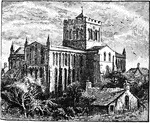
Hexham Abbey
There has been a church on the site for over 1300 years since Etheldreda, Queen of Northumbria made…

Bede's Tomb, Durham Cathedral
He is well known as an author and scholar, and his most famous work, Historia ecclesiastica gentis Anglorum…

Benedictine Monk
Within Roman Catholicism, a monk is a member of a religious order who lives a communal life in a monastery,…

Earls-Barton Saxon Tower
The influence is very much Roman, and this can be seen by looking at the doors and windows of the tower.…
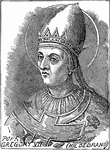
Pope Gregory VII
Pope Saint Gregory VII (c. 1020/1025 – May 25, 1085), born Hildebrand of Soana (Italian: Ildebrando…

Odo of Bayeux
Odo of Bayeux (c. 1036 – February 1097, Palermo), Norman bishop and English earl, was the half-brother…
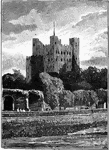
Rochester Castle
Rochester Castle stands on the east bank of the River Medway, in Rochester, Kent. It is one of the best-preserved…
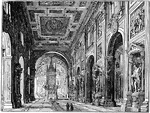
St. John's Church, Lateran Palace, Rome
The Basilica of St. John Lateran (Italian: Basilica di San Giovanni in Laterano) is the cathedral of…

Mitre and Crosier
The mitre is a type of headgear now known as the traditional, ceremonial head-dress of bishops and certain…

General View of Rome
Rome is the capital city of Italy and Lazio, and is Italy's largest and most populous city, with more…
